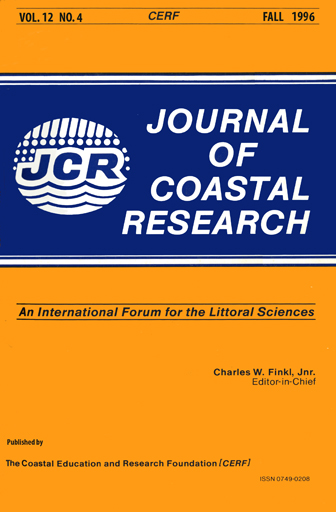Remote Sensing of Turbid Coastal and Estuarine Waters: A Method of Multispectral Water-Type Analysis
Keywords:
Atmospheric cold fronts, suspended sediments, coastal circulation, Multispectral Atmospheric Mapping System, SPOT images, atmospheric correction, Aircraft multispectral scanner, Chenier Plain, Atchafalaya Bay, Atchafalaya RiverAbstract
Analysis of digit.al imagery from the 100 m resolution airborne Multispectral Atmospheric Mapping Sensor (MAMS) indicates that scatter plots of remotely sensed sea surface temperature versus visible and near infrared subsurface reflectance can he used to quantitatively distinguish coastal water types, The Louisiana Gulf coast, a complex region of deltas, estuaries, and marshy wetlands, is the setting for this work. Gulf inner shelf and Mississippi River waters are the primary source water types, but four additional water types are formed locally and are readily detectable with MAMS including: shallow ambient bay water, fresh marsh water drainage, salt marsh drainage, and soil water drainage. ln sit measurements of suspended sediment concentration and sea surface temperature in the Atchafalaya and adjacent bays have verified the characteristics of these water types. It is found that under the forcing of atmospheric cold front passages, water type differentiation is enhanced, creating a mosaic of water types in these coastal waters. Multispectral remote sensing of these complex, variably turbid coastal waters, provides data useful for studies of water type formation and coastal circulation processes.


